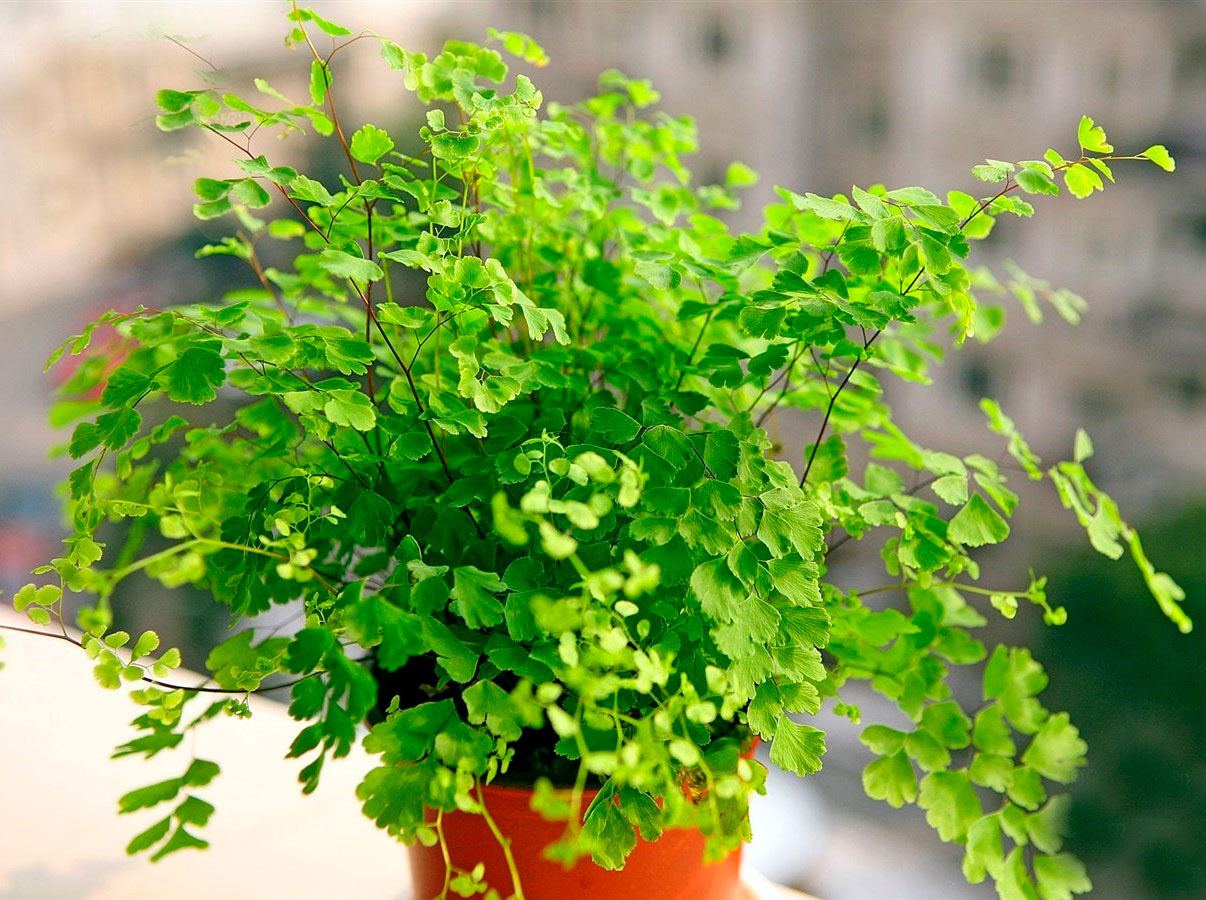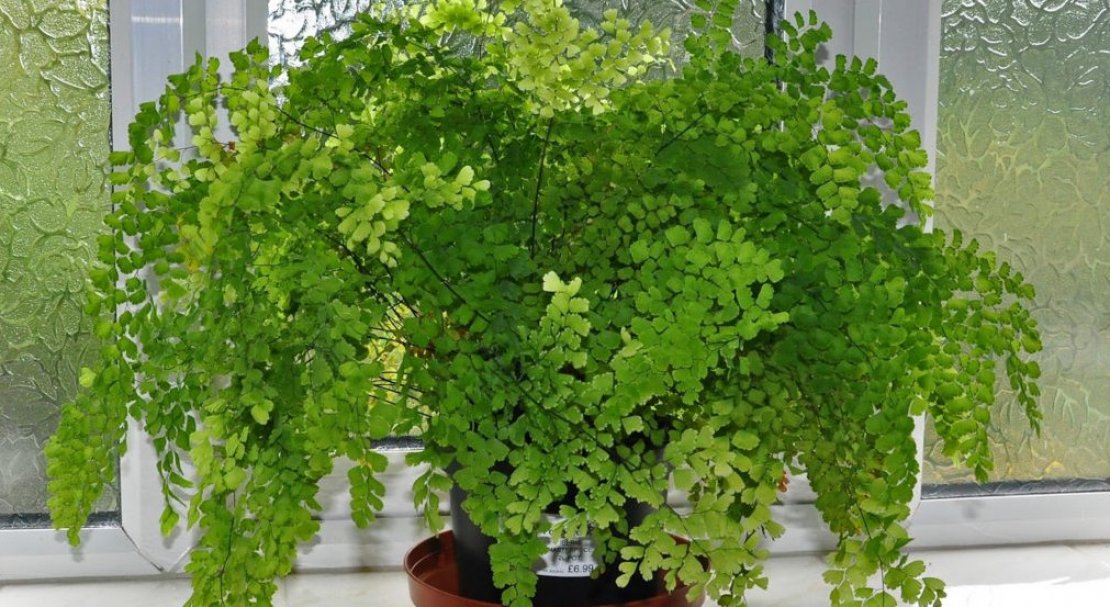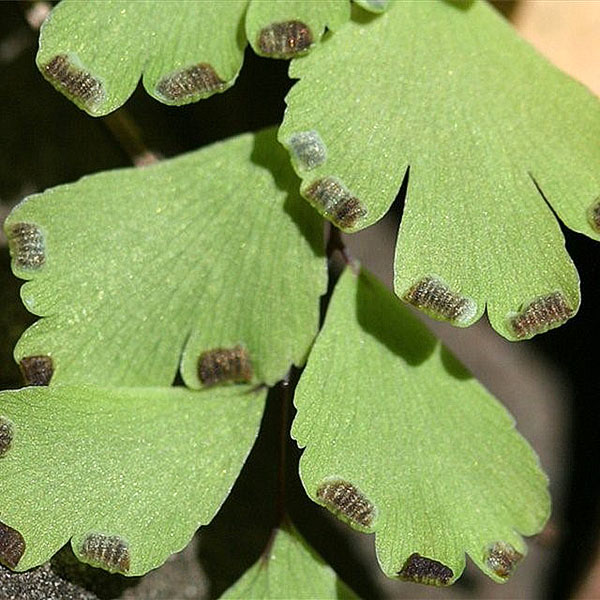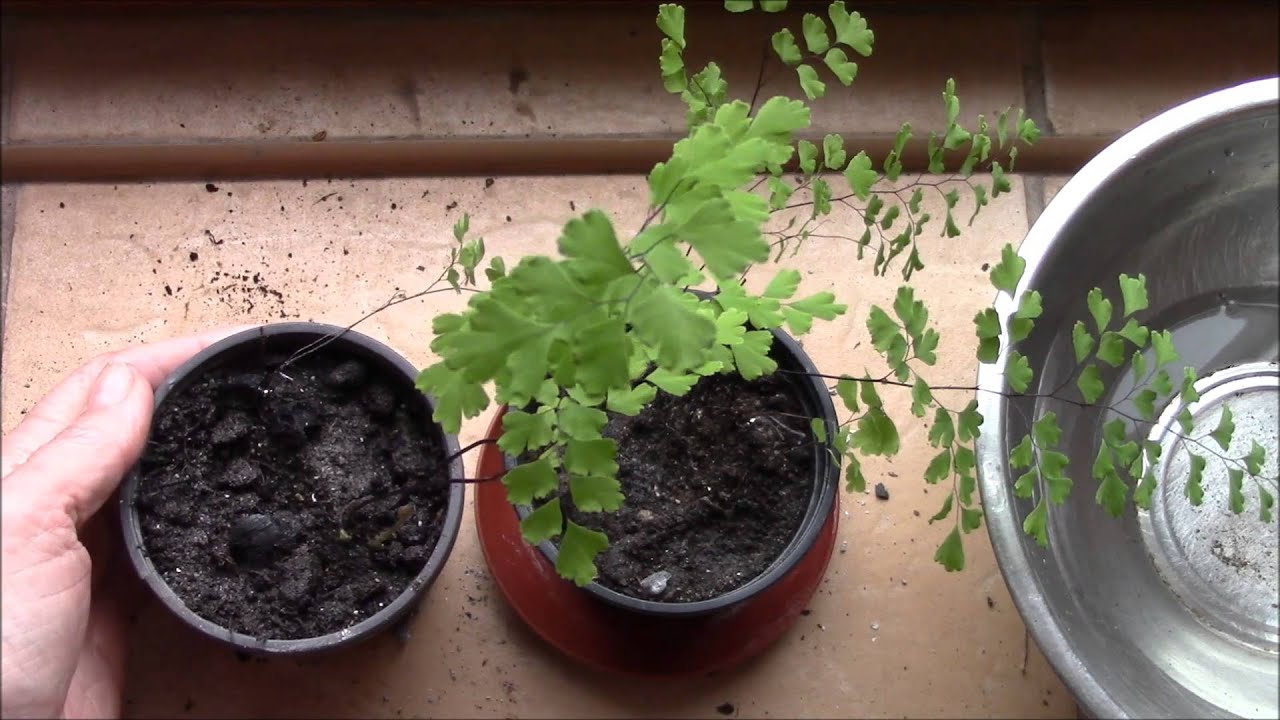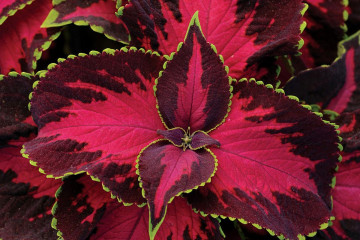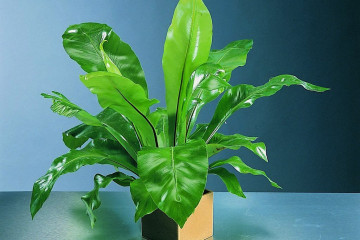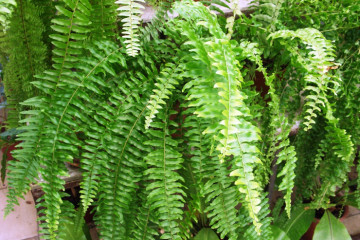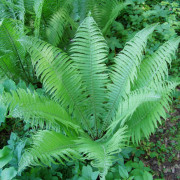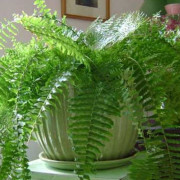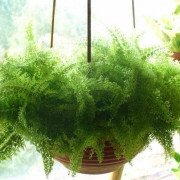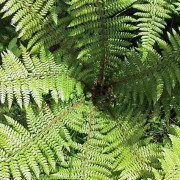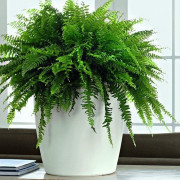Venus hair - description and care at home
Content:
Venus hair - this is how one of the fern varieties is poetically called, which is widespread among flower growers. This plant not only decorates the house with its carved leaves, but also neutralizes disease-causing fungi.
What does hair venus look like, which family does it belong to?
Venus hair (Adiantum capillus-veneris) is usually attributed to the genus of ferns, the Pteris family. This perennial is characterized by the fact that its leaves are capable of repelling water.
In appearance, the flower is a herbaceous plant 30-40 cm in height with a thin creeping rhizome and openwork leaves, painted in gray or bright green. The leaf plates on a long brown petiole (25 cm long) can be alternate or opposite. The sheets have a strongly dissected plate with many soft segments.
Common varieties
The most popular types of maidenhair for keeping in houses:
- stop-like;
- tender;
- fine-haired;
- Ruddy;
- beautiful;
- caudate.
Healing properties
The leaves of the flower are used to prepare powders and syrups that have expectorant, antipyretic and antimicrobial effects. Tincture is used to treat psoriasis, and dandruff is eliminated with the help of maidenhair decoction.
Briefly about the history of appearance
The distribution area of this fern is considered to be Brazil and the forests of South America. Wild species in natural conditions can be found in the Caucasus and Crimea. Houseplants are found all over the world.
Features of caring for a plant at home
A distinctive feature of the flower is its rapid growth. This is not difficult to achieve. Venus hair is a flower that does not make high demands on care.
Temperature
The optimum temperature for good flower growth is + 16… +20 ºС. The plant can tolerate cold weather up to +10 ºС, but lower temperatures lead to the death of leaves.
Lighting
The abundance of the sun negatively affects the growth and condition of the flower. In the wild, ferns are most commonly found in shady areas. At home, windows facing east or north will be suitable conditions for the location of the flower. In rooms facing west, it is better to remove the flowerpot from the windowsill into the depths of the room.
Watering
Watering frequency depends on the season and temperature conditions. On summer days, it is necessary to water the flower 3 times a week. It is important to ensure that the soil always remains slightly damp, while stagnation of water should not be allowed.
Spraying
If the air humidity is within the normal range, then the hair venereum does not need to be sprayed. Additional humidification is necessary only if extreme heat sets in and the air humidity is low. In this case, you can regularly spray the flower with warm water.Another effective way to regulate humidity is to place wet stones next to the flowerpot.
Humidity
Ferns adapt well to living conditions in an apartment. They can withstand a drop in air humidity of up to 20%, but it is best to keep this figure at around 50%. In dry air, the plant needs additional moisture.
Priming
Hair Venus belongs to those types of flowers that prefer loose nutritious soil. If you prepare the soil yourself, then you should mix 2 parts of peat and 1 part of leafy soil. A small amount of sand can be used to improve the friability.
Top dressing
During the period of active growth of the flower (starting in spring), fertilizers are used 2 times a month. Experienced flower growers recommend alternately adding mineral and organic dressings.
Features of care in winter, dormant period
Starting in October, the growth of the fern slows down, the plant enters a dormant period. At this time, it is important to provide him with rest. Watering the venus hair during the fall and winter months should be done once a week. Fertilizers are not recommended to be applied to the soil.
When and how it blooms
Venus hair belongs to the Fern class. Such plants do not have flowers both in the wild and in indoor conditions. Reproduction occurs with the help of spores.
Pruning
The maidenhair is cut off only if it is necessary to remove dry, yellowed or rotten leaves. The procedure must be carried out with a sharp instrument.
How hair venus reproduces
To get a new plant, the following propagation methods are used:
- already an adult plant is divided into several parts;
- planting seeds (spores).
They vary in effectiveness and duration, so it is worth exploring both methods before starting work.
Germination of spores
Before planting, you need to prepare the soil and the spores themselves. Soil is poured into a low, wide container, compacted a little and spilled with boiling water. This is done to eliminate pathogenic fungi and bacteria. Spores are placed for some time in a weak solution of potassium permanganate, thereby increasing the resistance of future sprouts to negative environmental influences.
Step-by-step instructions for planting maidenhair seeds:
- Spores are scattered evenly in the box. You do not need to dig in them, as this will make the germination process longer and reduce the chance of biting.
- A film is stretched over the container, due to which the greenhouse effect will be achieved. Once every few days, the film is opened to spray and ventilate the soil.
- The seed box is placed in a warm and bright place. It may take time for seedlings to emerge. In some cases, sprouts appear within 2 weeks, sometimes it takes more than a month.
- After the sprouts appear, the film is removed and the container is placed in a well-lit place (not under direct rays).
Grown up strong seedlings can be moved to a pot to a permanent place.
Dividing the bush
Propagation of maidenhair fern by dividing the rhizome is best in spring. To do this, remove a clod of earth from the flower pot and carefully examine the rhizome. It is important to check for rot and damage. If they are found, the bad parts of the roots are cut off with a sharp knife.
In addition, you need to pay attention to the number of growth points. If there are not enough of them on the mother bush, the plant should not be divided. There is a high risk that the flower will not take root.
Immediately after dividing the bush, the roots at the cut points must be treated with charcoal. Then all the delenki are planted in prepared pots with soil.
Transfer
It is best to do a flower transplant in the spring, even before the period of active growth has come. If a young bush is transplanted, then it is best to take a shallow pot. For mature plants, on the other hand, the flowerpot should be large enough.
Possible growing problems and diseases
With improper care, the flower begins to dry out and die. If you notice these changes in time, adjusting the conditions of detention will help restore the plant.
Leaves turn pale
Hair venus can discolor the leaves. The color turns from bright green to whitish or yellowish. The reasons for these changes:
- excess light or exposure to direct sunlight;
- lack of fertilizers;
- too frequent watering or stagnant moisture.
The tips of the leaves dry
If the tips of the leaves become dry, this indicates intense heat and lack of moisture. To eliminate the signs, you need to spray the plant more often.
Pests
Maidenhair is relatively rarely exposed to diseases and pests. This feature can be explained by the fact that its leaves have bactericidal properties. Of insects, the scale insect and fern aphid can settle on the plant. To eliminate parasites, the flower should be treated with insecticides for indoor plants.
Signs and superstitions
It is best to settle hair venus in the women's bedroom. According to superstition, this fern enhances the feminine energy. However, in any other house or office, it will also have to be in place, since the flower eliminates negativity and gives the inhabitants of the room peace of mind and self-confidence.
For flower growers looking for flowering plants, hair venus is not suitable, as the fern does not form buds. However, this feature does not at all affect the beauty of the perennial. An unusual look is provided by the carved leaves.
